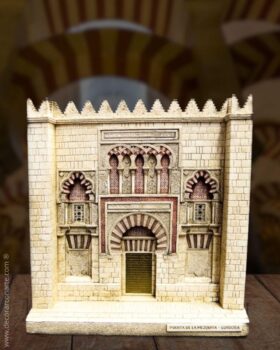Description
Model of the Roman Theatre of Merida, made of stone reconstituted with resin.
Measures 5 cm (height) x 14 cm (width) x 11 (depth) cm.
Roman Theatre of Mérida, Badajoz. The foundation of the ‘Spanish Rome’, Augusta Emerita (Mérida), as a colony to house the veterans of the Cantabrian wars took place in 25 B.C. (Augustus’ time) by Publius Carisius. From that time (16-15 BC), a group of buildings erected by order of Agrippa and intended for use as a theatre have survived, including the theatre. Planned together with the amphitheatre on the same construction axis and with a capacity for some 6,000 spectators, it is one of the best preserved in the West.
Although the splendour of the porticoed square that opened behind the stage (as in Pompey’s in Rome) has been lost, we can still admire the hemicycle with tiers for the audience and its entrances (cavea and vomitorium), the semicircular space (the orchaestra) and the stage (scaena), with its front wall or scaena frons articulated horizontally and vertically on two floors, in which the rich sculptural work of its Corinthian capitals and the imperial statues and statues of deities, many of which are now in the National Museum of Roman Art in the city, are particularly noteworthy.











Reviews
There are no reviews yet.